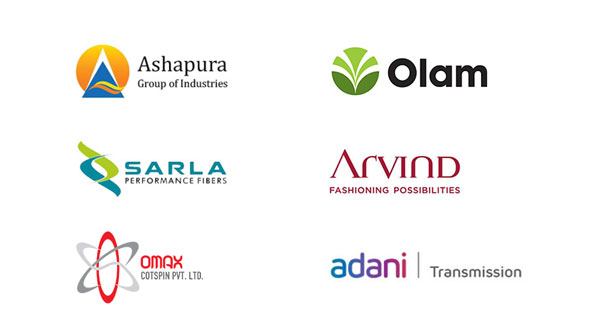
5S Method: Comprehensive Understanding and Importance of its Implementation
16th Oct, 2019
“A company that cannot successfully implement the 5S’s cannot expect to effectively integrate JIT, re-engineering or any other large scale change.”
-Hiroyuki Hirano, Japanese Engineering Educator
In the increasing competition and ever-changing economy, companies in the manufacturing industry can survive and thrive only if they can adapt to change. Hence, in order to achieve significant growth and maximum revenue, organizations must undergo periodical changes in their business strategies and manufacturing management practices. And also make modifications or take necessary actions in a way that they result into increase in the efficiency of the manufacturing process, reduce waste and cost and create value. A foolproof way to ensure the same is to first implement the 5S process as a part of lean methodology. 5S was popularized by Taiichi Ohno, Toyota engineer who is also known as the Father of 5S.
.
What is 5S?
5S is a Japanese methodology that is now largely used mainly by manufacturing industries across the world with the goal of achieving a workspace that is organized, clean, maintained and safe, which eventually helps in increasing output. It is a strategic and standardized process that essentially focuses on visual management starting from the floor to operational manuals. The ‘5S’ is an acronym that stands for five terms that are written in Japanese.
- Seiri (Sort) – Keep the essentials and eliminating the unnecessary items.
- Seiton (Set in order) – Allot a place for each item and keep them in place. Keep it organized.
- Seiso (Sweep/Shine) – Clean the workspace. Keep it clean and tidy.
- Seiketsu (Standardize) – Establish standard as in identical workplace areas for all.
- Shitsuke (Sustain) – Maintain and review the implemented process. Keep it safe.
Today, businesses are required to grow rapidly to keep up with the fast-paced world. And keeping control on manufacturing and costs is not enough; they must save by eliminating the waste and get the best of both the worlds. Hence, 5S, a process that is focused on eliminating waste and fostering growth is embraced by most of the organizations globally.
.
Why is the 5S Method Important?
The 5S is the first and foremost step in the lean philosophy implementation, an elaborate plan for a much bigger goal that is utilized to eliminate waste, remove unnecessary steps, reduce costs, increase productivity and observe high quality to ultimately increase revenue.
When the 5S methodology does not directly bring value to the business, it surely plays a vital role in increasing the value and growth. Having been proven as an integral tool to improve the workplace environment, it is highly effective to reduce waste and increase efficiency in the manufacturing process. Hence, even though the 5S method is fruitful, it must not be the ultimate goal since it is a driving force of the entire lean management in the company. It would be best to make the practice a part of your culture and leverage it to foster consistent improvement. The key benefits of implementing 5S in a workplace are:
- Increased productivity
- Reduced waste
- Better maintenance
- Lessened down-time
- Increased safety
- Increased efficiency
- Increase in the workplace morale and customer satisfaction
.
Where can the 5S be Applied?
The 5S can be applied in any type of work environment. From a small retail store to hospitals, factories, telecom companies, airports, corporate offices, restaurants etc. So, no matter which industry you are integrated with, you can implement 5S to eliminate waste and get the best output.
.
How Can Implement the 5S Most Efficiently?
The 5S is a systematic method that can be implemented very easily with a simple P-D-C-A cycle. P – Plan, D – Do, C- Check and A – Act. After identifying objectives of using the 5S in your workplace, you can plan and assign tasks, train and appoint facilitators, and prepare promotional tools. Then, you can implement the plan and take action and implement sort & identify & eliminate unnecessary items. In set in order, define what & how to arrange and implement shine to ensure cleanliness Keep a check from time to time to ensure the desired results are being delivered. At last, incorporate the practices in your culture and habit to make the change sustainable and continuous results.
.
What are the types of waste you can eliminate?
Waste exists almost everywhere. Waste is what adds to the costs without providing any value to the customer. Thus, you must make conscious changes to eliminate the waste. We have compiled a list of waste in manufacturing as well as services that
For manufacturing
- Defects
- Transportation
- Overproduction
- Waiting
- Processing
- Movement
- Excessive Inventory
- Unexplored employee creativity
.
For Services
- Errors in Documents
- Transport of Documents
- Doing Work Not Requested
- Waiting for the Next Step
- Process Steps & Approvals
- Unnecessary Motion
- Backlog of Work
To eliminate waste from all the sections in the organization could be challenging especially if your organization is medium or large in size. However, you can begin from making primary level modifications in your existing process with the help of 5S consultants and experts to leverage all the benefits of 5S.
Qualified and certified professionals at 4C have firsthand experience with implementing the 5S method perfectly and help in maximizing benefits while eliminating the waste completely. We also provide 5S certification as well as 5S audit certification with training as well as solution to ensure quality management, cost-effectiveness, and efficiency in your organization.
Having worked with clients such as Arvind textile, Olam, Omax Cotspin, Sarla Performance Fibers Ltd., Ashapura Minechem, Adani Transmission, Petrotec and many more, we have garnered valuable insights and expertise that help us implement the 5S most efficiently. For a better understanding of the 5S implementation and how you can reduce waste and increase productivity in your organization right now, Contact us.

